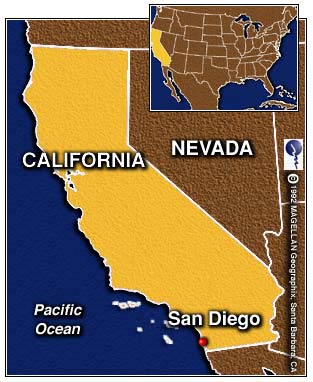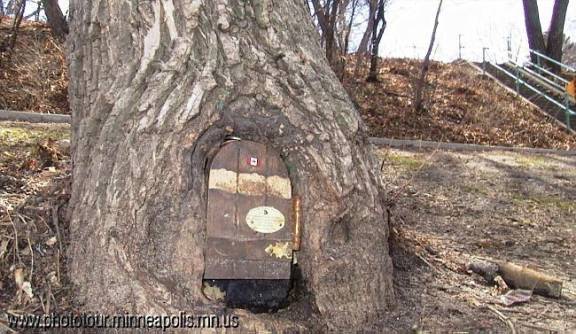
Flag of
west of Eden
The colors of the flag; blue, green, and brown
symbolize the colors of the Earth. The Falg's emblem is the tree because it
is a universally recognized symbol for life.
|
|
Transportation
Walking on foot-- on ground, on bridges,
on ladders-- is the way most Edenites go. Boats, hangliders, the monorail,
and electric shuttles are favorites for long distances, and planes are the
way most people travel to mainland Neoamerica. Edenites are currently
experimenting with the magnetics behind the monorail to create efficient
hovercraft.
|
|
Fashion
Edenites have an eclectic taste in clothing. Some
loosely follow the trends of Neoamerica, while others follow the fashions
of other eras and cultures, merge different tastes, or just do their own
weird thing. West of Eden's interpretation of the tunic is the most
practical clothing and is generally worn by everyone at least some of the
time; tunics are comfortable, reasonably loose-fitting but flattering, come
in any length and style, and may be cinched along the legs whenever someone
wants to climb a tree or do something otherwise aerobic (and not flash
everyone in the process). Edenites still express themselves with tattoos,
piercings, etc., though henna is the most common technique.
|
|



Family/Community
Edenites enjoy close family relationships. The
tightest bonds are within the family tree, but strong relations extend into
the community. In fact, suspended bamboo bridges link the family trees to
community areas, where Edenites gather for parties, bazaars, and fairs.
These community areas occupy several platforms constructed around five to
ten towering trees, with shops in every tree and things to do on every
level. There are even internet cafes, game rooms, chocolatiers, and pet
shops.
|
|
Diet
Edenites meet their nutritional requirements with fruits
and veggies from organic farm crops, along with fresh fish from the sea and
various truffles and nuts gathered in the forests. Families often have
personal gardens, kept either at the base of the family tree or even
scaling the trunk, where symbiotic fruit-bearing vines cling to the tree.
Specialty soups are the gourmet delicacy of West of Eden, with
snail-'n-tail gumbo rating highest just above carrotomato chowder.
Technology: Rather than withdraw from
technology for fear of its abuse, Edenites have embraced it. Only in West
of Eden it has been transformed into something eco-friendly and organic.
Plant tissues conduct electricity and channel information, specialized
bacteria wipe out toxins and clean buildings, chemicals spur organs to
regenerate themselves And the energy that is generated no longer comes
from nuclear plants or coal mines-- but from hydroelectrics, solar panels,
thermoelectrics, and wind turbines.
|
|

Housing
West of Eden is a chiefly arboreal community, with
living establishments found among the many trees. One massive tree hosts an
entire family; a portion of the interior is hollowed out and may be used as
a storehouse, dining room, bedrooms-- whatever-- while the branches and trunk support a glorified tree house,
equipped with eco-safe amenities and biotechnology. Family trees may be
redwoods or any of the gigantic species indigenous to the location,
including live oaks of enormous girth and height. The family and tree exist
in a mutualistic relationship, with the tree providing shelter and the
family providing maintenance and nutrition. A tree is chosen with great
care and often becomes a generational house, surviving for 150-700 years
past maturity (depending on species and potential accidents); as a tree
approaches its lifebound, the occupants move out, have a mourning ceremony,
and the tree is recycled into furniture, boats, etc. Usually a sapling is
planted where the family tree once stood, where it is closely supervised
and trained by biotects so that it matures into an excellent and unique
family tree.
|
|
History
West of Eden was founded in 2156 on an island off of
Gonorrhitrea (formerly the state of California) after some unsuccessful
attempts by the Neoamerican government in Walmaerte (formerly D.C.) to
counter the degeneration of resources and the population in general. West of Eden was one of several
communities to experiment with solutions to the looming environmental and
cultural crisis, along with the PEC (Pink Eye of Compassion) and GAS (God?s
Army of Scientists). West of Eden was one of the more successful groups,
and many of its practices are being implemented in Neoamerica in the hope
of salvaging the struggling nation.
|
|
Location
260 miles off the coast of the former state of
California, on a temperate island only recently touched by humankind.
Features prime fishing coast, farmland, forests, and freshwater resources.
Many exotic plantforms and animals along with familiar ones, including
beesbutt, a species of prickly vine found to be especially useful in
Edenite biotechnology, and rockleaf, a favorite seaweed harvested to make a
superior concrete substitute.
|
|




![]()


![]()